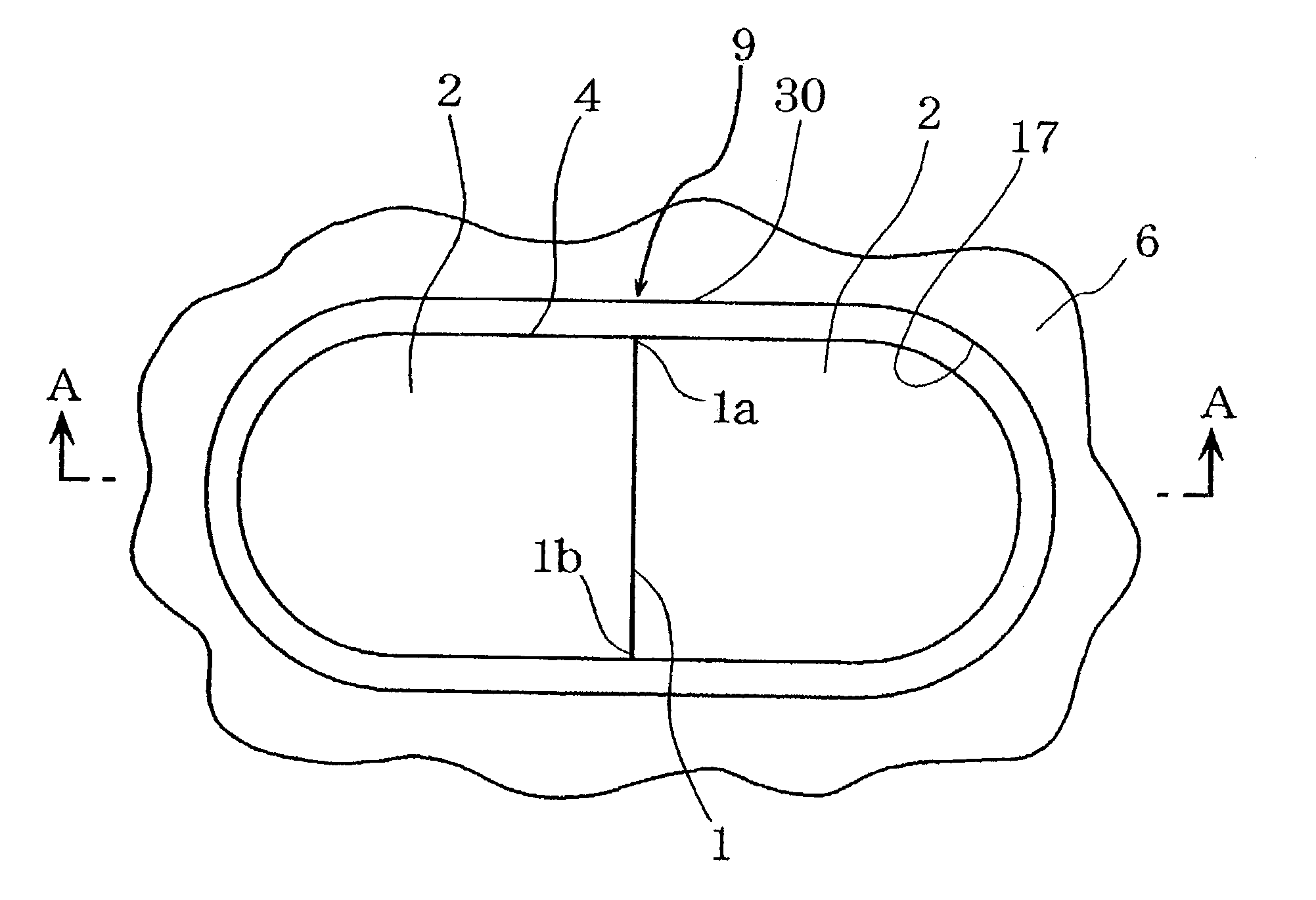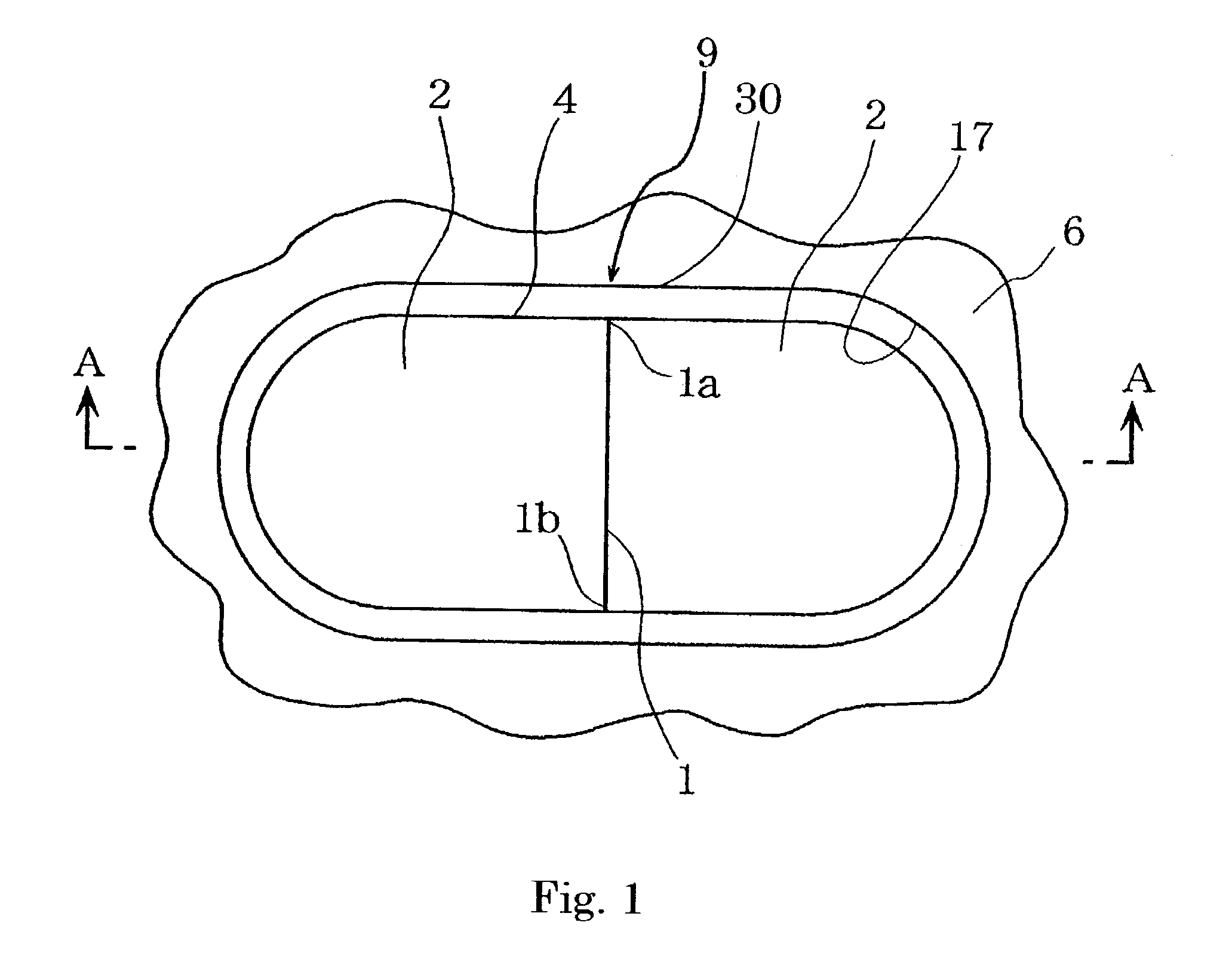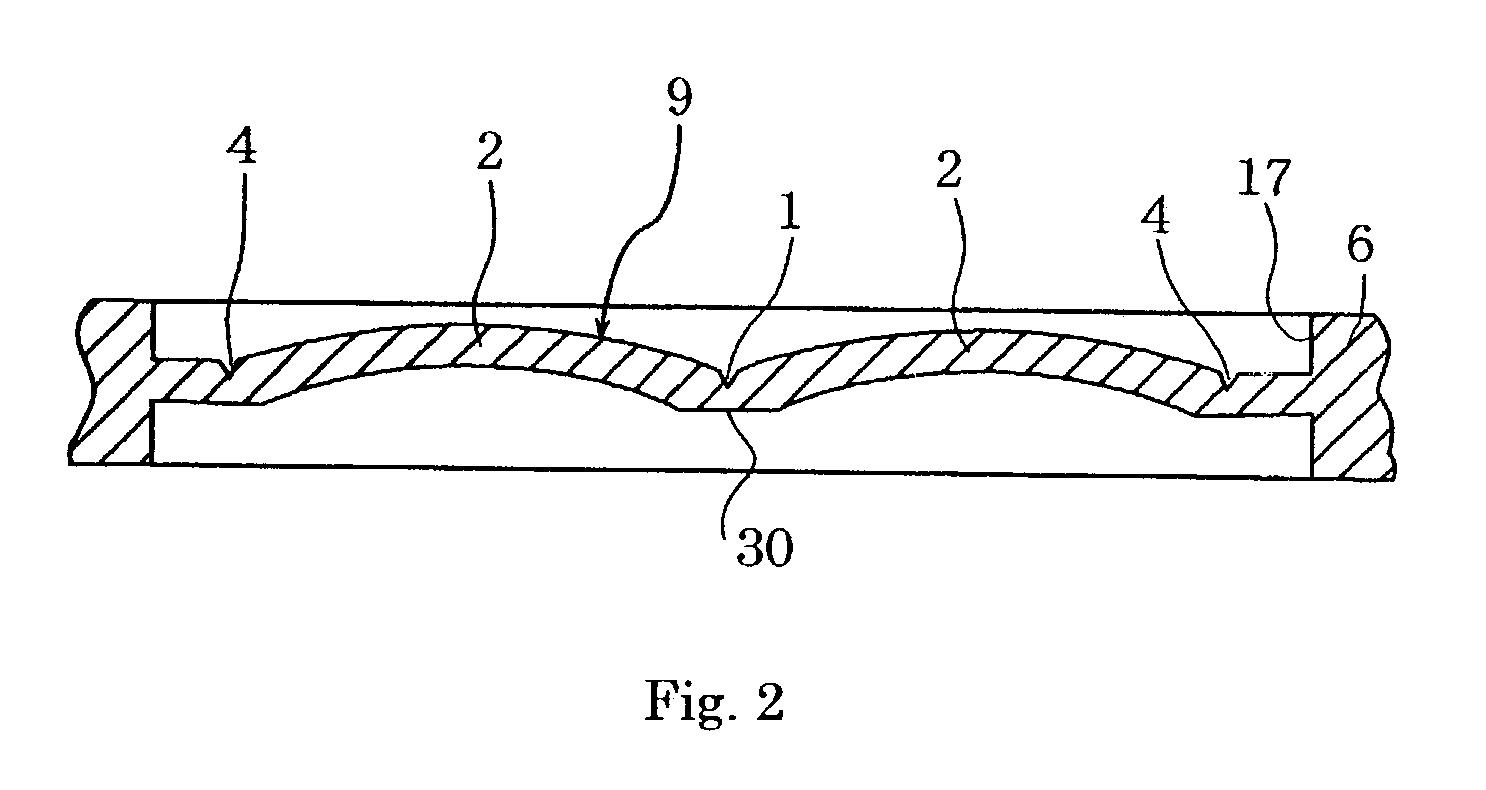Cell safety valve and cell having same
a cell safety valve and cell technology, applied in the field of cell safety valves, can solve the problems of difficult control of the operating pressure large amount of gas produced in the cell, and difficulty in the operation of the safety valve, so as to achieve the effect of enlarging the opening area of the safety valve and quickly releasing the gas generated
- Summary
- Abstract
- Description
- Claims
- Application Information
AI Technical Summary
Benefits of technology
Problems solved by technology
Method used
Image
Examples
example 1
[0083]An example of the present invention will be described below based on FIGS. 1–13.
[0084]FIG. 1 is a plan view of a valve plate of the present invention. FIG. 2 is a sagittal sectional view taken along the line A—A in FIG. 1. FIG. 3 is a plan view of a non-aqueous electrolyte cell using a safety valve of the present invention. FIG. 4 is a sagittal sectional view taken along the line B—B in FIG. 3. FIG. 5 is an enlarged cross sectional view around a break groove. FIG. 6 is an enlarged cross sectional view near a break aiding groove. FIG. 7 is a view illustrating a stress applied on the break groove in a safety valve of the present invention when an internal cell pressure rises. FIG. 8 is a safety valve of a valve plate in another example. FIG. 9 is a plan view of a safety valve in another example. FIG. 10 is a plan view of a safety valve in another example. FIG. 11 is a cross sectional view of a valve plate when the valve plate is plane-shaped. FIG. 12 is a cross sectional view of...
example 2
[0096]A cell was prepared in the same manner as Example 1 except that the remaining thickness (hereinafter abbreviated as remaining thickness of the break aiding groove) of a portion of the valve plate above which the break aiding groove is formed was set to 35 μm, and the remaining thickness (hereinafter abbreviated as remaining thickness of the break groove) of a portion of the valve plate above which the break groove is formed was set to 25 μm.
[0097]The cell thus prepared is hereinafter referred to as a cell B1 of the present invention.
example 3
[0098]A cell was prepared in the same manner as Example 1 except that the remaining thickness of the break aiding groove was set to 52 μm, and the remaining thickness of the break groove was set to 42 μm.
[0099]The cell thus prepared is hereinafter referred to as a cell B2 of the present invention.
PUM
 Login to View More
Login to View More Abstract
Description
Claims
Application Information
 Login to View More
Login to View More - R&D
- Intellectual Property
- Life Sciences
- Materials
- Tech Scout
- Unparalleled Data Quality
- Higher Quality Content
- 60% Fewer Hallucinations
Browse by: Latest US Patents, China's latest patents, Technical Efficacy Thesaurus, Application Domain, Technology Topic, Popular Technical Reports.
© 2025 PatSnap. All rights reserved.Legal|Privacy policy|Modern Slavery Act Transparency Statement|Sitemap|About US| Contact US: help@patsnap.com



